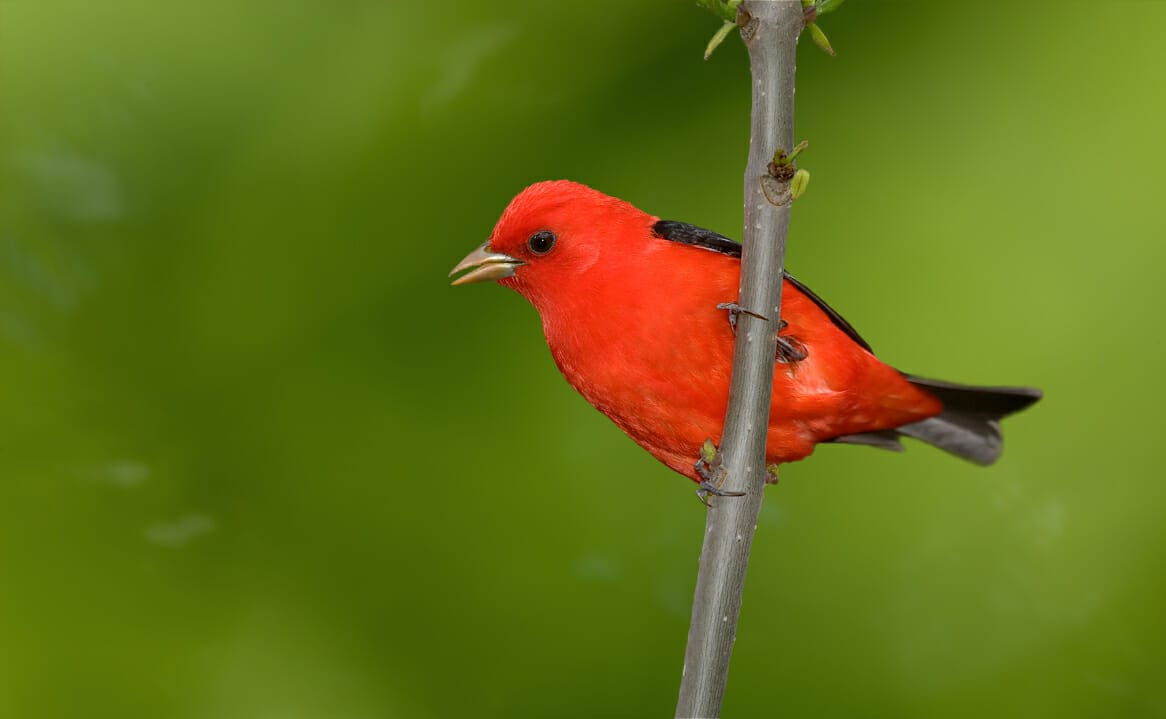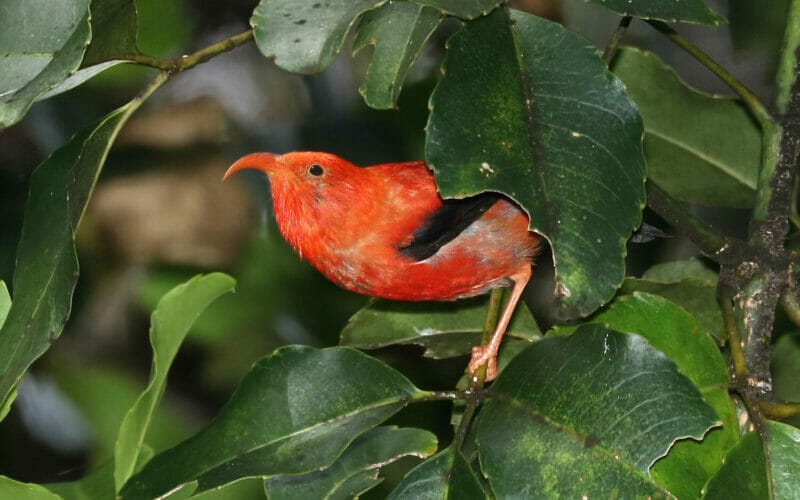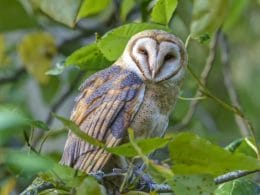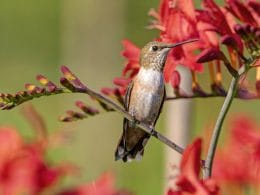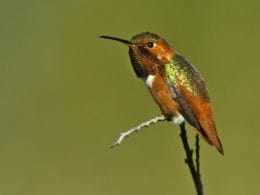As the second highest number of bird sightings recorded on eBird, Texas is a busy place. Great for bird watchers in the spring and fall as migratory birds pass through, but there are lots of resident birds too. In this post, we will be looking at 10 birds present in Texas that have some red coloring.
The State of Texas

The climate of Texas is variable, which is no surprise given its size. In the northwest, it is continental and the rest of the state is subtropical. The western side of Texas is dry and desert like while the east is intermediate. Texas is sunny all year round. This range of climates and environments is reflected in the number of birds that visit.
Birds of Texas
The state bird of Texas is the Northern Mockingbird, which it shares with several other states. This is possibly because it is so common and undoubtedly entertaining with its ability to mimic all sorts of noises, including those human made.
While Texas is on the migration path for a lot of exotic warblers and hummingbirds, there are is a lot to see all year round with woodpeckers, finches and cardinals. We have chosen 10 of the best red birds found in Texas to investigate.
Our top 10 red birds of Texas
Painted Bunting (Passerina ciris)
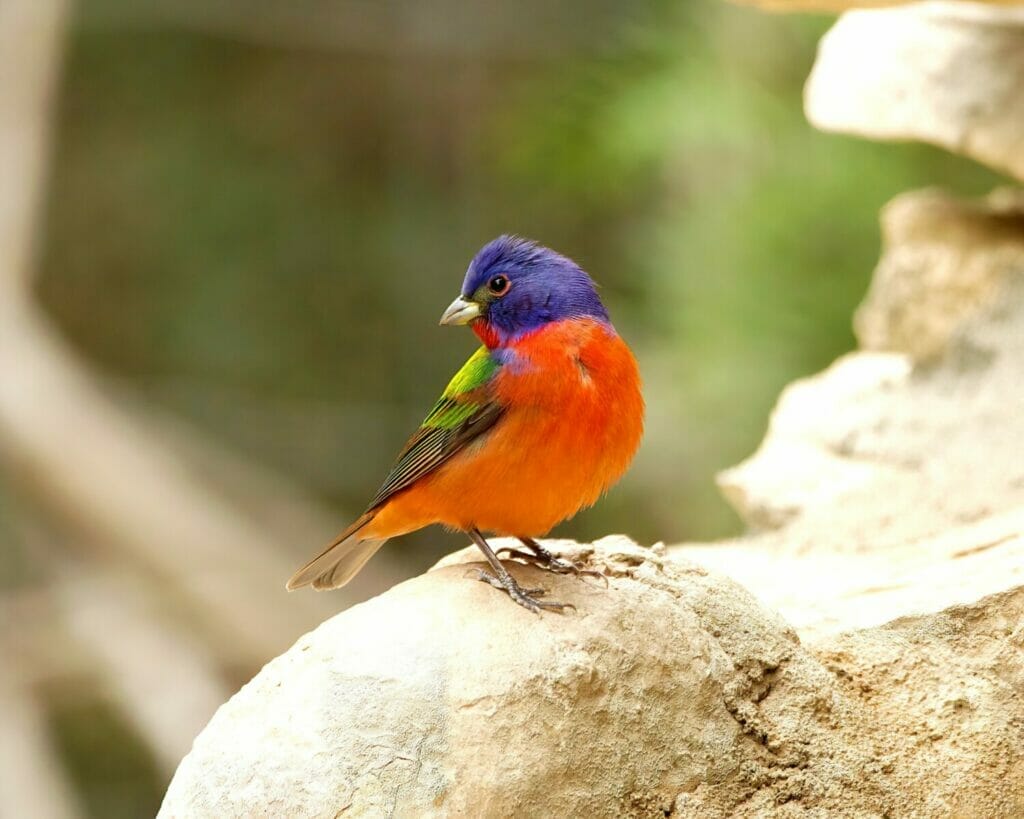
Identification and Size
The adult male, as pictured here, has a bright red breast, offset by the vivid blue head and green/yellow back. The female is dark green with a paler breast.
Length: 4.7 – 5.1 inches
Weight: 0.45 – 0.67 ounces
Distribution
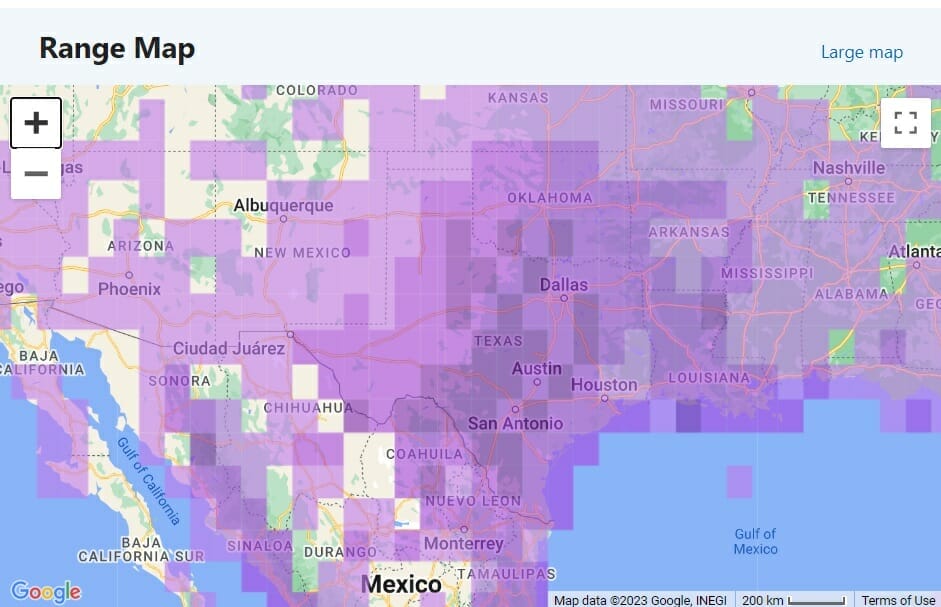
There are distinct populations of Painted Bunting and one is centered in Texas. This group migrates to Mexico.

Call
Diet
During spring and part of summer, the Painted Bunting feeds mainly on arthropods. At other times, it eats grass seeds.
Interesting Fact
The French translation of the name Painted Bunting is nonpareil and means ‘without equal’. You can’t argue with that!
Common Redpoll (Acanthis flammea)
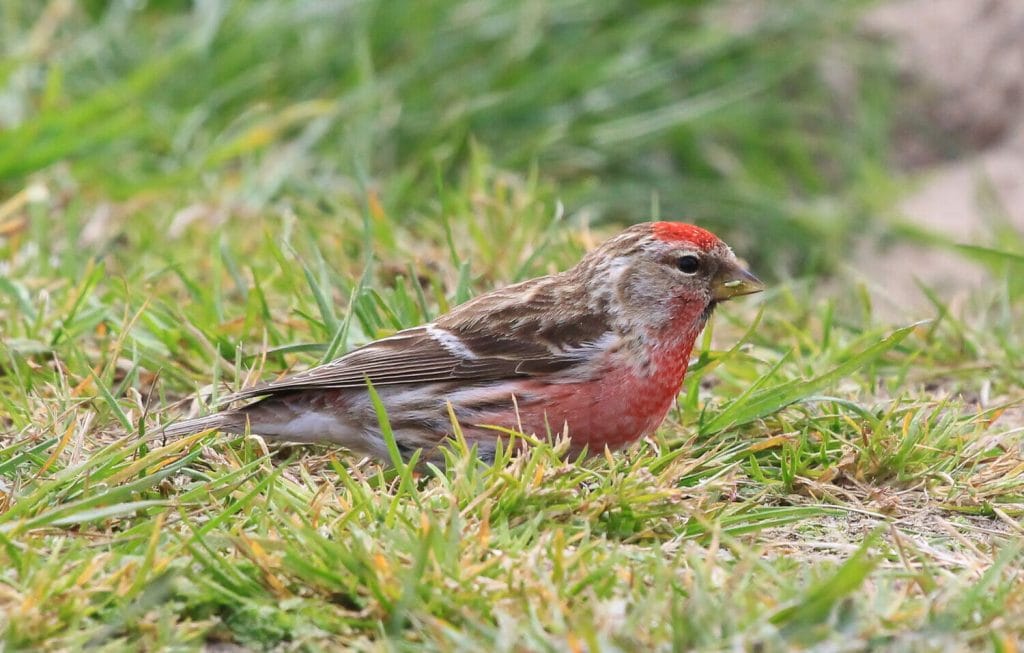

Identification and Size
A small finch with a patchy brown back and in non-breeding it has streaks on the breast. A red cap is always visible with the red extending down the breast in breeding season. Plumage is variable and breeding plumage can wear into the winter.
Length: 4.7 – 5.5 inches
Wingspan: 7.5 – 8.7 inches
Weight: 0.4 – 0.7 ounces
Distribution
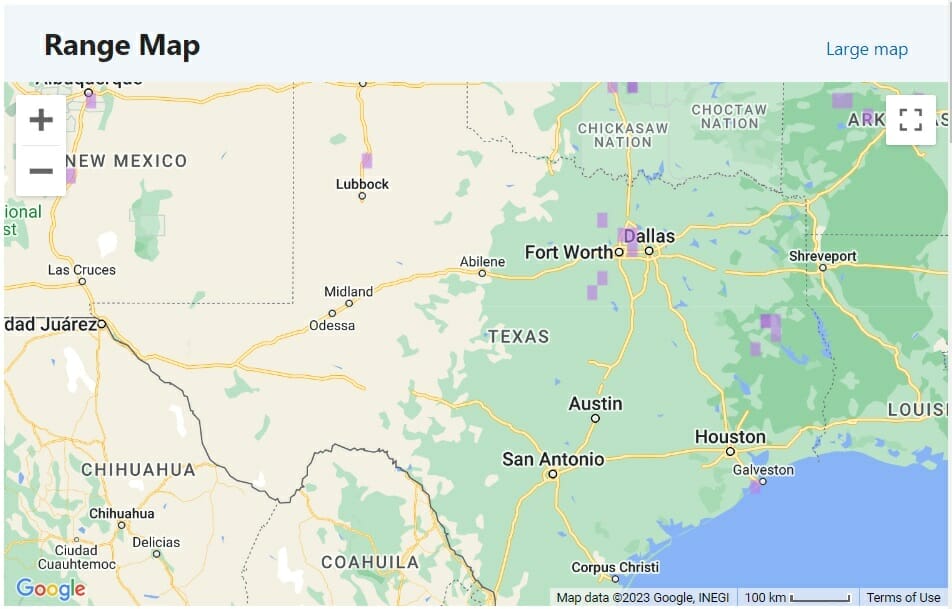
Redpoll like colder climates and so are not seen too often in Texas. Reports submitted are from urban pockets during winter.

Call
Diet
The Common Redpoll diet is predominately seeds with some insects.
Interesting Fact
Common Redpoll have pouches in their mouth like chipmunks! They store food and take it away to eat it at their leisure.
Scarlet Tanager (Piranga olivacea)
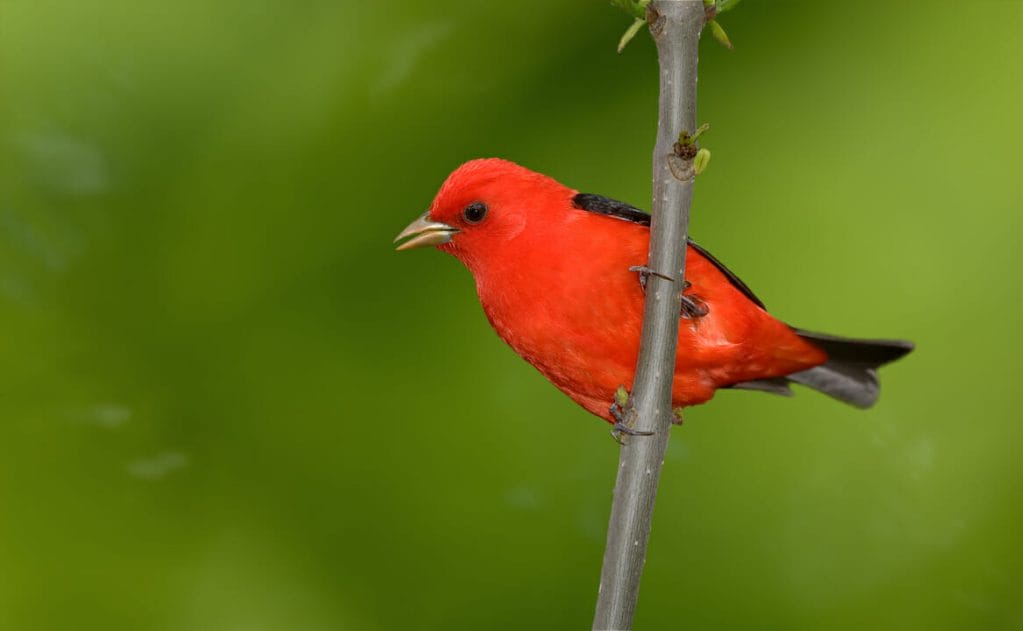

Identification and Size
The male Scarlet Tanager is an incredible, vivid red with black wings and tail during the breeding period. This fades and the male in non-breeding plumage looks more like the female. She is an olive -green with black wings.
Length: 6.3 – 6.7 inches
Wingspan: 9.8 – 11.4 inches
Weight: 0.8 – 1.3 ounces
Distribution

Records of the Scarlet Tanager are patchy through the year. They overwinter in the north of South America and migrate through central U.S. states to breed north towards Canada.

Call
Diet
The Scarlet Tanager is insectivorous, particularly during breeding season. It will supplement this with worms and fruits at other times.
Interesting Fact
Scarlet Tanagers are targeted by the parasitic Brown-headed Cowbird and although they seem to understand the threat from the cowbirds they don’t make the connection with the displaced eggs. They will rise the cowbird chicks as their own.
Red-headed Woodpecker (Melanerpes erythrocephalus)

Identification and Size
Easily identified, the Red-headed Woodpecker has a black back, white breast and rump and the most incredible crimson colored head.
Length: 7.5 – 9.1 inches
Wingspan: 16.5 inches
Weight: 2.0 – 3.2 ounces
Distribution
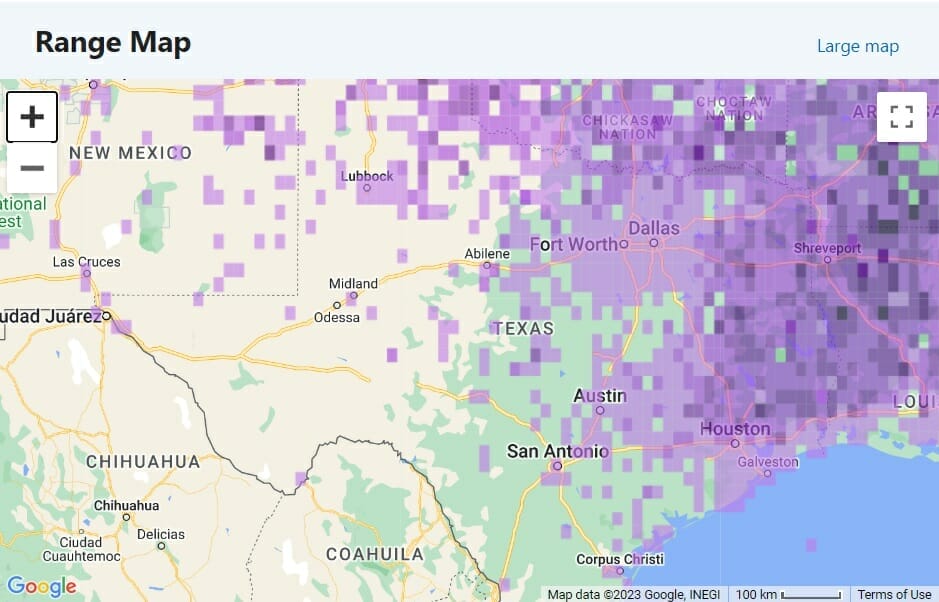
The Red-headed Woodpecker is present all year round ranging from central Texas to the east where it is more concentrated.

Call
Diet
The Red-headed Woodpecker is omnivorous and could double as a flycatcher for its insect catching acrobatics.
Interesting Fact
Fossils of the Red-headed Woodpecker have been found, dating back 2 million years.
Pyrrhuloxia (Cardinalis sinuatus)
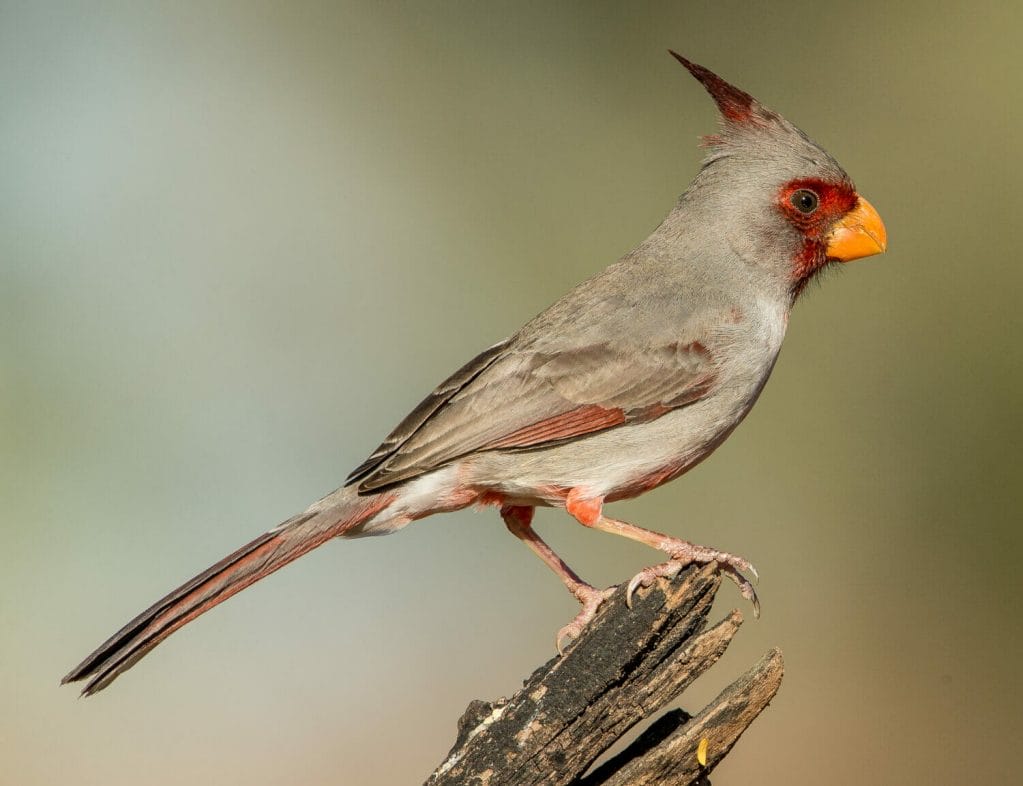
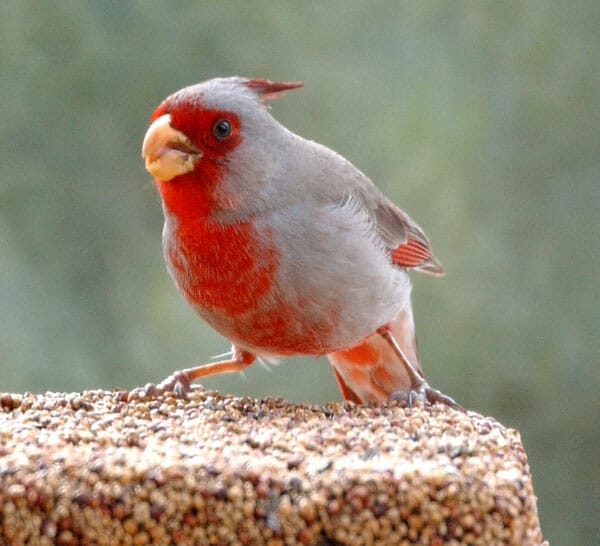
Identification and Size
This is a crested finch, related to the cardinal family, which accounts for its similar appearance. The adult male is a gray brown with red through the face and breast, as well as the crest. Females are similar but more muted.
Length: 8 inches
Weight: 1.2 ounces
Distribution

The Pyrrhuloxia can be see all year in Texas from the central region through to the west, with a concentration to the south.

Call
Diet
The Pyrrhuloxia is an opportunistic feeder, taking advantage of what is available. It prefers seed, fruits and some insects.
Interesting Fact
Related to the Northern Cardinal, the Pyrrhuloxia will aggressively defend its territory but will not fight with the cardinal.
Red-bellied Woodpecker (Melanerpes carolinus)
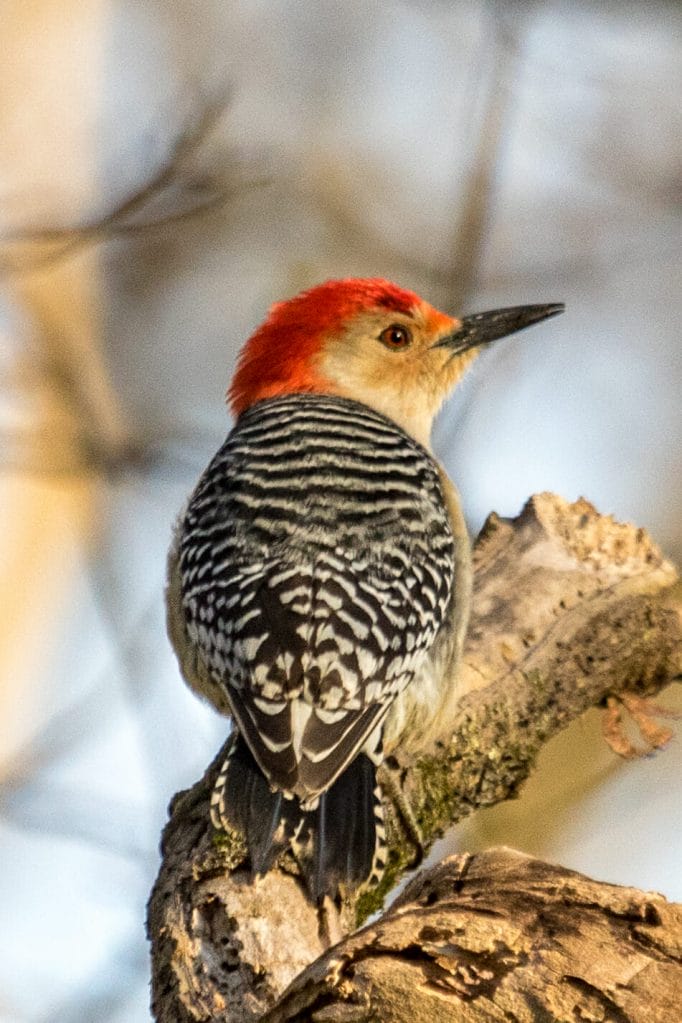
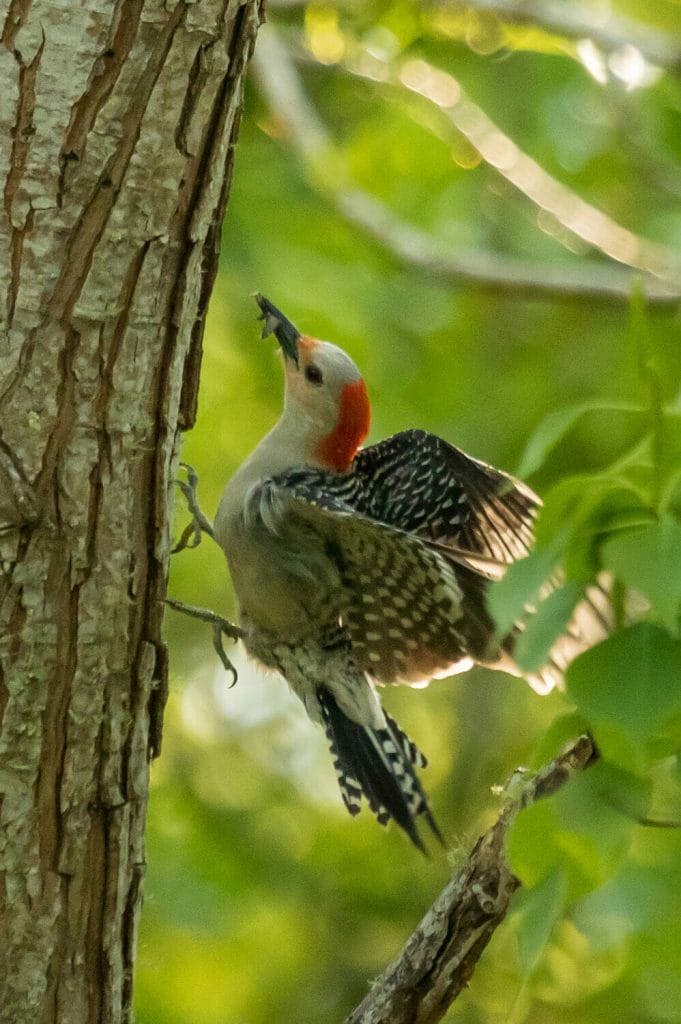
Identification and Size
This stunning medium sized woodpecker has an intricately patterned black and white back with a creamy breast and face. Its crown and neck is a vivd red.
Length: 9.4 inches
Wingspan: 13.0 – 16.5 inches
Weight: 2.0 – 3.2 ounces
Distribution
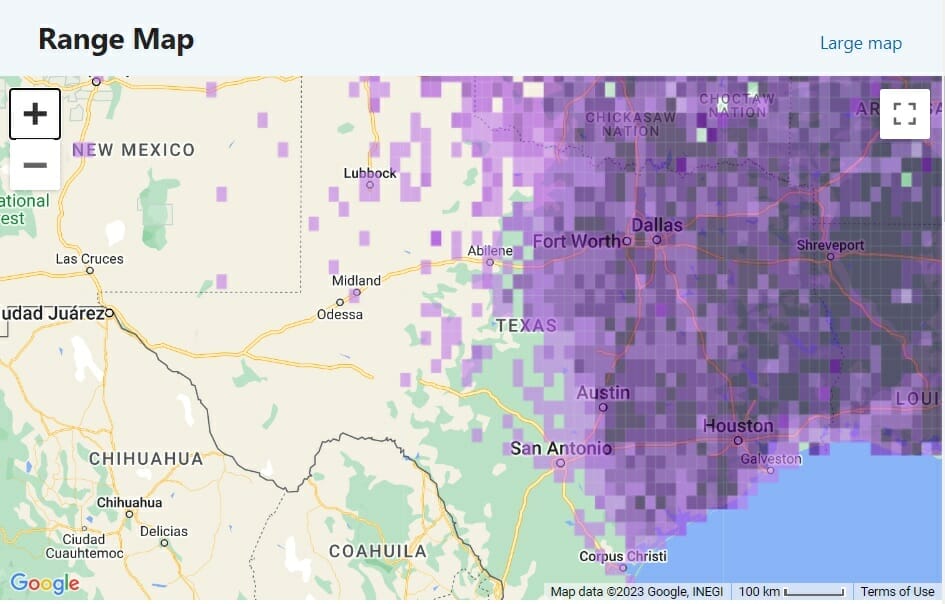
As shown in the eBird range map above and distribution chart below, the Red-bellied Woodpecker can be seen all year in central and eastern parts of Texas.

Call
Diet
While it has a taste for insects, the Red-bellied Woodpecker is an opportunist and will eat seeds, fruits and nuts.
Interesting Fact
The Red-bellied Woodpecker has an incredible tongue. It can stick it out almost 2 inches beyond its bill. This specialisation, coupled with the sticky barbs on the end of the tongue, helps it dig into deeper crevices looking for prey.
House Finch (Haemorhous mexicanus)


Identification
This finch is generally a dull brown with pigment from their diet causing colorations from yellow to pink and red.
Length: 5.1 – 5.5 inches
Wingspan: 7.9 – 9.8 inches
Weight: 0.6 – 0.9 ounces
Distribution
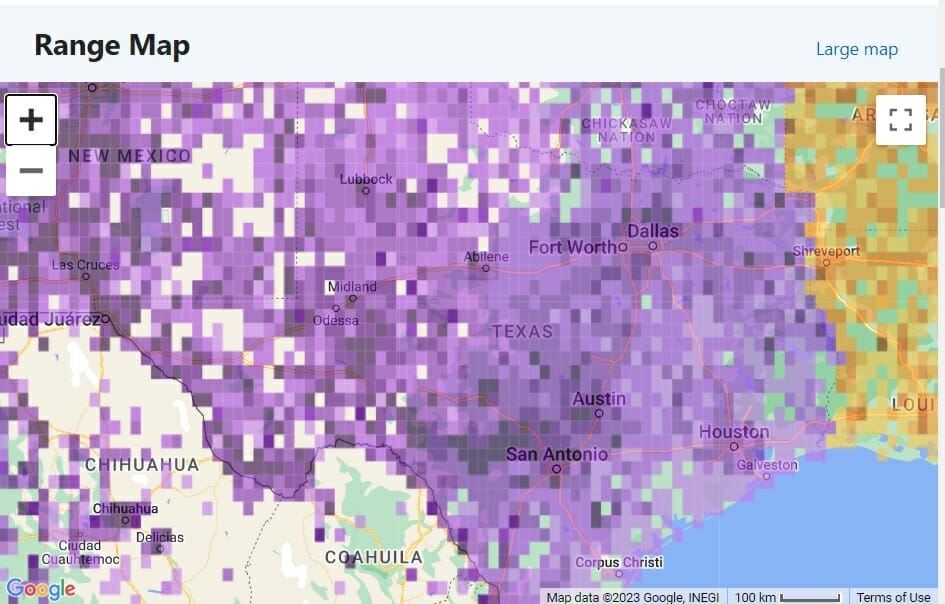
The House Finch has successfully adapted after introduction to the U.S. It can be commonly seen across the state, all year round.

Call
Diet
The House Finch eats vegetable material including seeds, fruits, leaves and flowers.
Interesting Fact
The male House Finch doesn’t actually have red feathers. Like the pink flamingo, its feathers are affected by what the bird eats. The more red pigment in its diet, the redder the bird and the more attractive it is to the female.
Vermilion Flycatcher (Pyrocephalus rubinus)
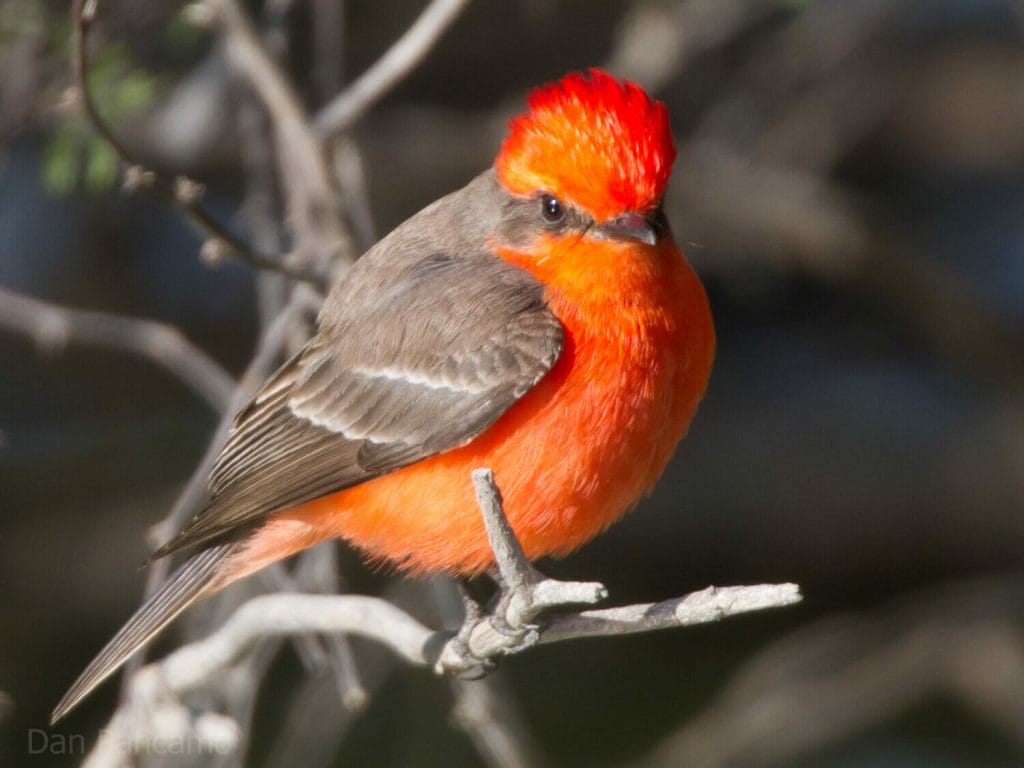
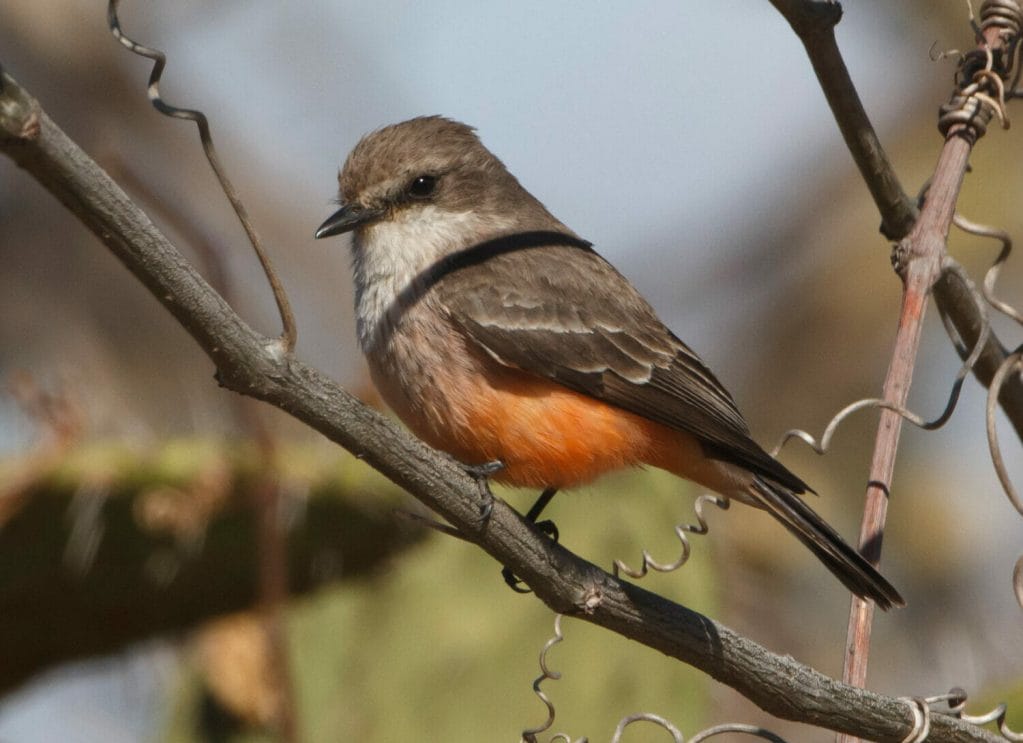
Identification
The male bird is a vivid scarlet color with a brown back and wings. The female has red on the belly but is more muted.
Length: 5.1 – 5.5 inches
Weight: 0.38 – 0.49 ounces
Distribution
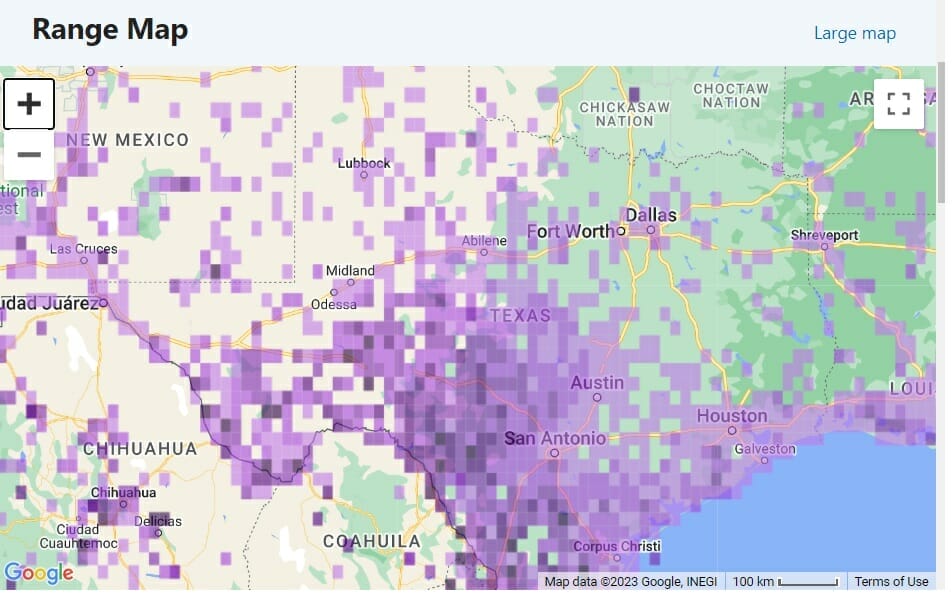
Sightings are consistent all year round in the western parts of Texas.

Call
Diet
The Vermilion Flycatcher feeds on arthropods. There is little data about any supplemental foods.
Interesting Fact
While the Vermilion Flycatcher is included on this list because of its vivid red head, there are some sub-species that have hardly any red in their plumage at all.
Summer Tanager (Piranga rubra)

Identification and Size
The adult male, as pictured above, is an incredible bright red all over. The female is a rather dingy yellow.
Length: 6.7 inches
Weight: 1.05 ounces
Distribution
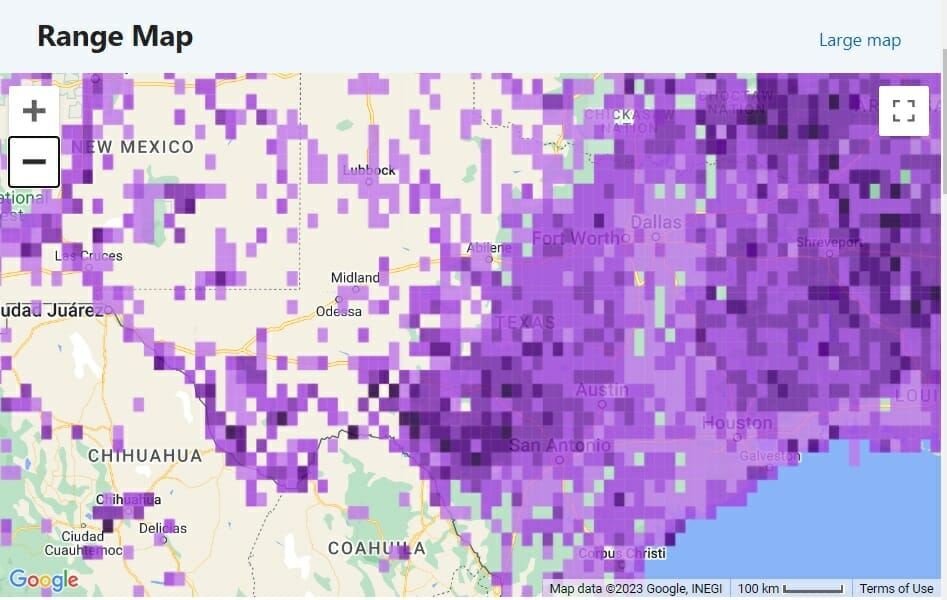
Found in southern and eastern parts of Texas during migration periods. It moves between Central America in the winter and North America to breed.

Call
Diet
The Summer Tanager loves to eat bees and wasps but will take other insects as well.
Interesting Fact
The Summer Tanager will kill its prey by bashing it on branches. It removes the stings from the wasps and bees by rubbing the them against the bark.
Northern Cardinal (Cardinalis cardinalis)


Identification and Size
The male cardinal is a bright red with a black face. The female’s colors are more dull but it still has red splashes. Both have crests.
Length: 8.3 – 9.1 inches
Wingspan: 9.8 – 12.2 inches
Weight: 1.5 – 1.7 ounces
Distribution

The Northern Cardinal is one of the most commonly seen and reported songbirds in America. There is a concentration of reports in eastern urban areas. Less so in the west.

Call
Diet
The Northern Cardinal eats largely plant material with some insects and larvae. It is a very popular visitor to backyard feeders.
Interesting Fact
The Northern Cardinal is hugely popular with the general public. It is the state bird of 7 states in the U.S.
FAQs
This would have to be the Northern Cardinal, found across a large part of the state.
Four species have red covering more that 50% of their bodies – Summer Tanager, Vermilion Flycatcher, Northern Cardinal and Painted Bunting.
The Northern Cardinal is the state bird of Texas.
Thanks for reading our post about red birds in Texas. My favorite has to be the Summer Tanager. Photos just do not do justice to that incredible plumage.




